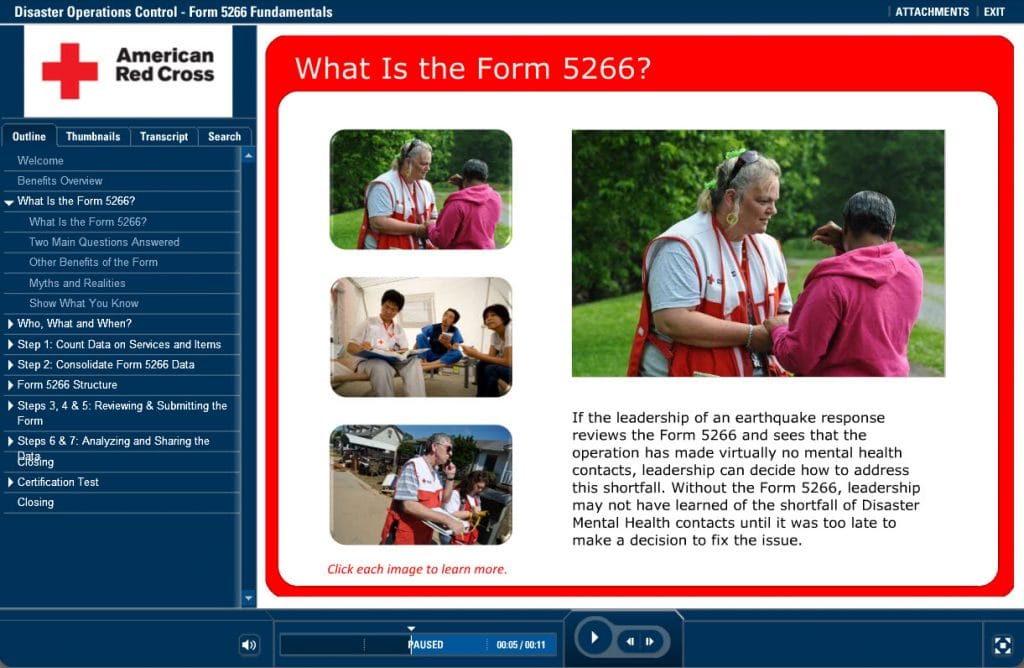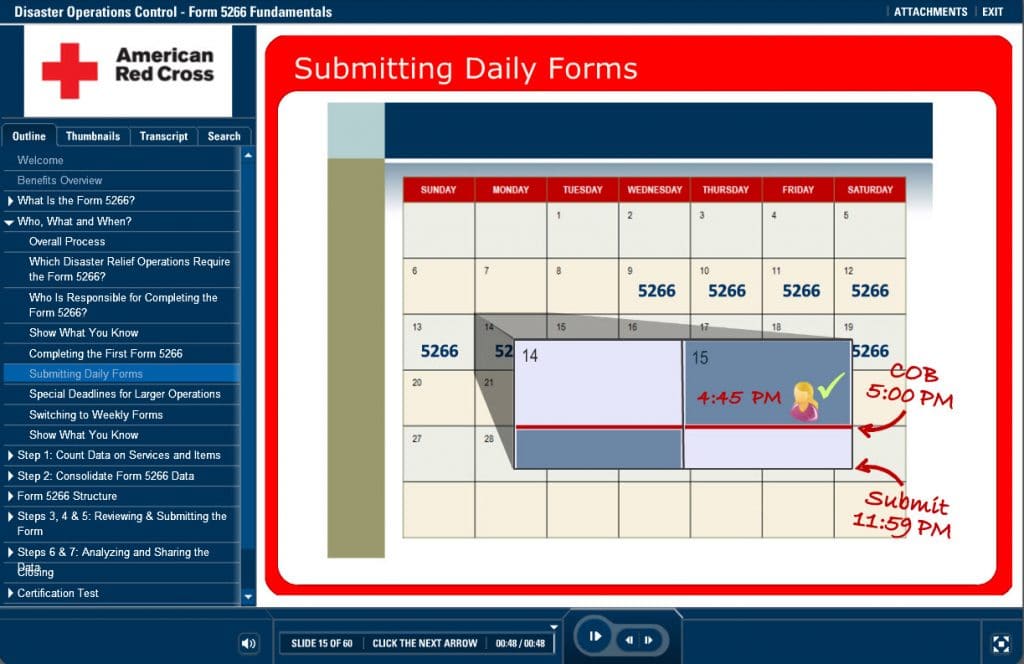Amy Morrisey
Let’s face it: Engaged volunteers are the backbone of your organization’s success.
If you’re like most nonprofits, you’re scaling a mountain of needs with limited resources to do so. This is when motivated, eager volunteers step in to bridge the gap. There’s simply too much to be done without some extra helping hands!
However, whether you’re working with a volunteer who’s recently retired and ready to give their time to a new project or a college student eager to supplement their studies—these volunteers can do more hurt than good if they’re not trained effectively.
As a volunteer coordinator, you’re likely familiar with the value of training, and you’re well aware of the necessity of effective volunteer training—we’d bet a decent chunk of your efforts is concentrated on these tasks alone! But, don’t click away from this article just yet.
We’d guess that in 2020, your volunteer training efforts looked a bit different than in past years. Maybe you canceled in-person training sessions, or you put together emergency supplementary training to prepare current volunteers to give their time in a socially-distanced manner. Nonprofits just like yours had to find ways to pivot and keep volunteers engaged to stay the course during uncertainty.
When it comes to pivoting your volunteer training, we’ve found that the best solution is to use custom-developed e-learning courses.
We’re going to cover the top tips to ensure your transition to e-learning-based volunteer training is successful. First, however, we’re going to address why you should consider e-learning to train your volunteers. Let’s dive in.
Benefits of E-Learning for Volunteer Training
“If it isn’t broken, don’t fix it.”
You’ve heard this phrase before. If your in-person volunteer training has worked in the past, why should you invest in e-learning courses to change it now? Surely, the pandemic will end eventually—so why change now?
Here are a few benefits we’ve found in e-learning based volunteer training:
- Volunteers can revisit the training whenever needed, without having to sign up for a training session.
- E-learning training can be more cost-efficient over time when compared to in-person training sessions.
- E-learning is largely isolated from external factors—so, whether there’s a global pandemic or an in-person trainer is feeling under-the-weather, the show can go on.
And of course, with e-learning, volunteers can complete training from their own preferred locations. When it comes to promoting volunteerism from home, online onboarding is key. With e-learning, you can train volunteers rain or shine, pandemic or not.
That said, providing volunteer training via e-learning isn’t as simple as taking a video of your in-person training and calling it a day. Continue reading to learn our top tips to create effective training.
Top Tips for E-Learning Volunteer Training
As a volunteer coordinator, you probably have a list of skills and procedures that individuals need to learn before they can assist your organization. While covering each of those components is crucial—partially-trained volunteers will do you little good—it’s only half the story.
Because you see, your volunteers also have expectations and desires surrounding what they’re going to get out of the course. It’s up to you to both cover your learning objectives and meet your volunteers’ needs. After all, you do want them to return after the training to volunteer!
The following tips will help you do both. Let’s dive in!
Paint an authentic picture of the volunteer experience.
Think about your first day in your current position. Maybe you entered with years of experience working with nonprofits, or maybe you made the transition to philanthropy on a whim and never looked back. Either way, your first day on the job was probably full of unknowns.
What was the office culture like? What would your day-to-day responsibilities actually look like? Would it differ from your expectations?
Your volunteers feel the same way.
Even if they’re familiar with your nonprofit and fully on-board with your mission, they don’t know what the work behind-the-scenes looks like. If you’re a food bank, will they be sorting donations or distributing much-needed resources across the community? If you’re running blood drives, for example, will volunteers be helping guide event attendees or be in the room where the drive occurs?
This is why it’s important to paint an authentic picture of the volunteer experience with your e-learning training courses.
Here are a few tips to help you do so:
- Use photos of volunteers in action. When creating a training course for the American Red Cross, we incorporated photos of actual volunteers in action. Photos allowed learners to visualize volunteering—down to the uniform and all.

- Use immersive scenarios. Walk learners through scenarios that present the question, “If you encounter this situation, what is your next step?” This allows them to “experience” volunteering before arriving at their first shift (and, to practice their on-the-job decision-making!)
- Walk learners through examples. You’ve probably heard the phrase “Show, don’t tell.” In our Red Cross example, we don’t tell volunteers about filling out a complicated statistical tracking form. We show them how to do so with examples:

Over time, retaining existing volunteers is more efficient than recruiting new ones. When you retain volunteers, you save on training costs, and you benefit from their growing experience. The first step to retaining volunteers is making sure that you’re providing an accurate representation of the volunteer experience from the start. You don’t want to have any squeamish volunteers showing up to a blood drive and running away, never to return again!
Prioritize creating an engaging e-learning experience.
These days, we can find a lot of ways to spend our time. Spending time with family, reading newsletters, browsing social networks, binge-watching on streaming services—there is a variety of entertainment within arm’s reach at any given time.
Have you ever read a boring book, or sat through a dull movie? We’d bet you either stopped reading/watching or tuned out the second half.
This trend isn’t unique to you. If something that’s voluntary isn’t interesting, it’s not going to get done. There are simply too many options to prioritize something that’s less-than-engaging!
That means your e-learning training doesn’t just need to be valuable and informational. It also needs to be engaging. Here are a few tips to help you do so:
- Experiment with interesting formatting decisions. At Artisan, we once created a course about Feng Shui, a topic that revolves around making intentional decorating decisions to ensure peak harmony. We used click-to-reveal to illustrate the key tenets of Feng Shui and drag-and-drop elements to have learners “decorate” a room in a manner that aligns with those rules. Drag-and-drop and click-to-reveal are two ways that you can make content more interesting!

- Prioritize content that’s valuable to learners. Rather than sharing a long, droning history of your nonprofit—important, but not interesting—zero-in on what the volunteer needs to know to succeed.
- Use branching scenarios to personalize the experience. Allow learners to “test out of” the e-learning training that they don’t need, such as yearly refresher courses. Or provide additional, in-depth information on specific topics allowing learners to take a deep-dive into their interests.
We understand that elevating your e-learning courses in this manner goes a bit more in-depth than your average webinar. But, that doesn’t mean it has to be out of reach for your team! This is one reason why you may choose to work with an e-learning content development company. These consultants can develop innovative, interesting e-learning courses that also meet your training objectives.
Provide opportunities to learn more.
Finally, let’s talk about one of the biggest discrepancies between in-person training and e-learning training: your volunteers aren’t in a room full of their peers during the experience. Learning side-by-side with other volunteers enhances the training experience in a variety of ways.
For example, have you ever had a burning question during a training session, then felt too nervous to ask it yourself? Then, someone else asks it and the entire group is better prepared because of it.
It’s important to preserve these opportunities for volunteers that want to go above-and-beyond. Here are a few e-learning ideas that you can use to do so:
- Create supplementary courses about specific topics. Consider creating microlearning courses alongside your main volunteer training. Dive into specific positions—such as volunteering with events or outreach—to empower interested volunteers to continue learning.
- Ensure training is available at all times. Maintain an ongoing training library of all of your volunteer courses. This allows learners to revisit past courses and stay up-to-date on all new developments (such as any changes you’re making to ensure safe volunteering during the pandemic).
And lastly, remember that e-learning training shouldn’t be a full replacement for any onsite learning your volunteers may experience. So, while you should aim for comprehensive e-learning training courses, also prepare for questions when the volunteer shows up for their first shift!
Your nonprofit relies on well-trained volunteers to make a lasting impact. But, with COVID-19 disrupting your original training plans, it’s time for a change to continue providing an exceptional training process.
With e-learning training, you can create valuable courses that volunteers benefit from both right now and well beyond the pandemic’s end. Focus on creating courses that are authentic, engaging, and educational, and you’ll lay a strong foundation!




